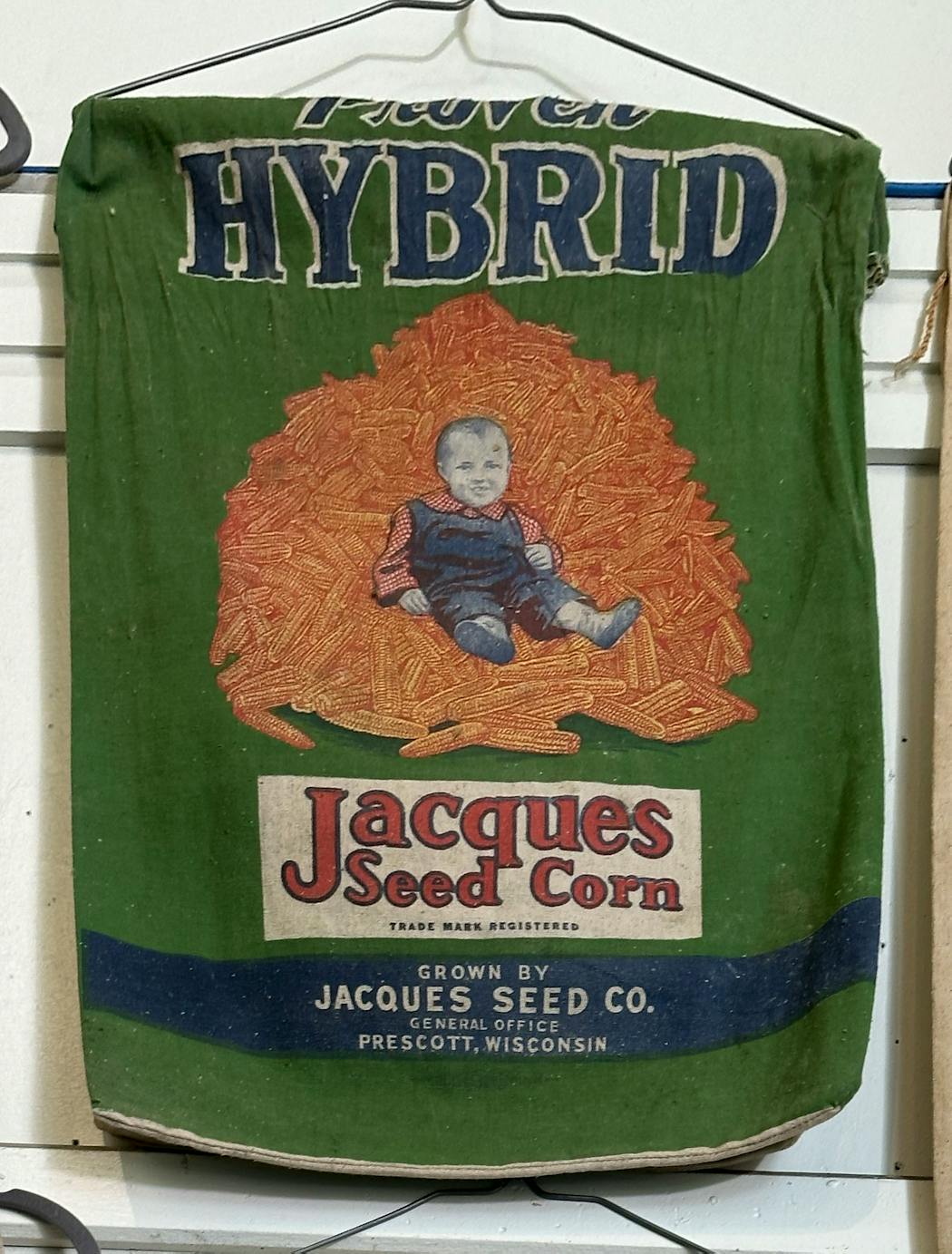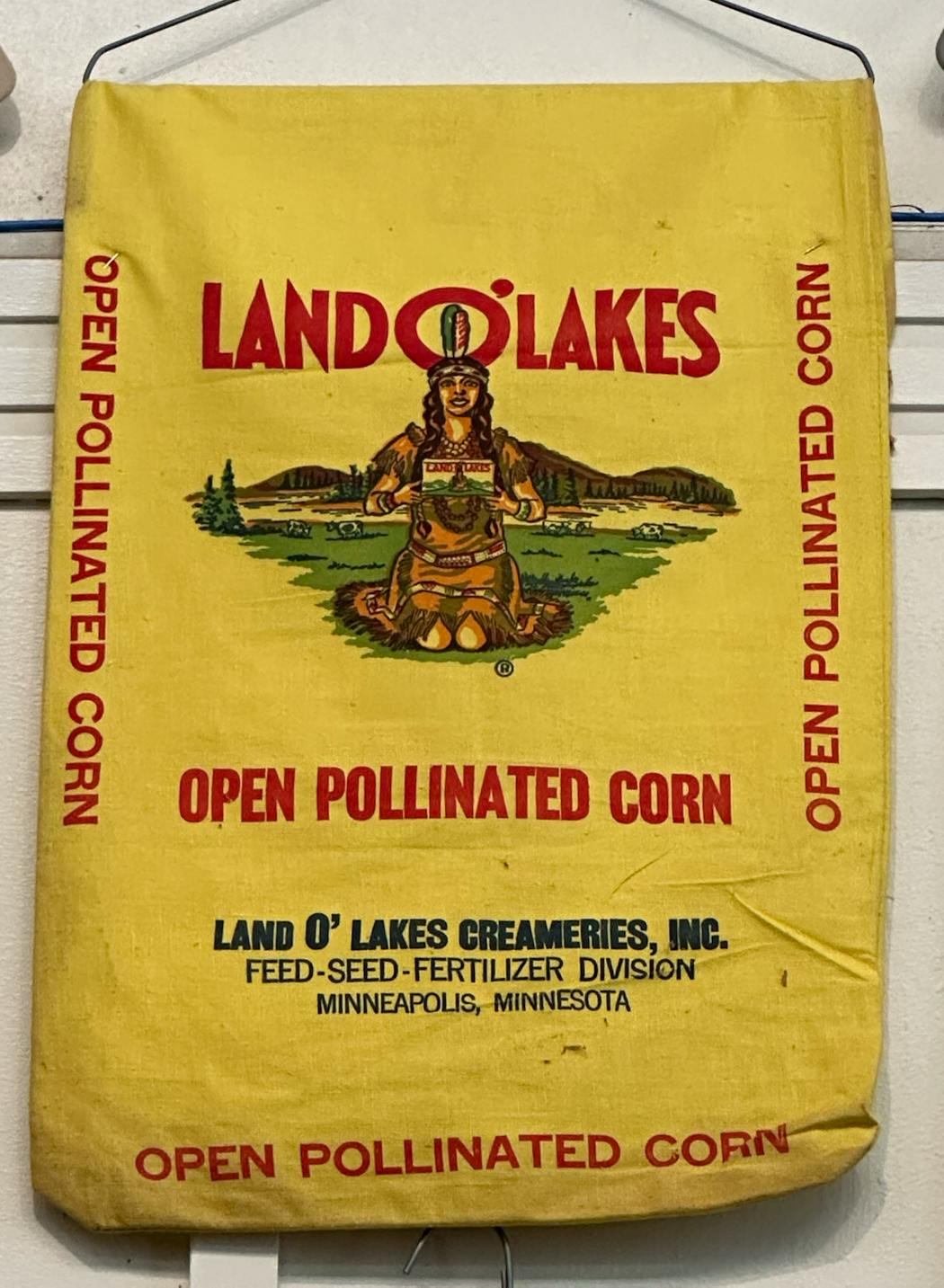If you're a State Fair expert, you can give people directions. "Where are the seed bags?" someone asks. In the Agriculture building, past bees and apples, behind the scarecrows.
Granted, not a lot of people ask that question. But they should.
Most fair visitors prefer to see the crop art. Why would you want to see the bags that used to hold seeds? It's like going to see the Mona Lisa, and on the other side of the room are the boxes and jars that used to hold the paints.
Except that the seed bags are art themselves.
There wasn't any compelling reason to gussy up the bags — farmers need seeds, and if one year's crop fails because someone sold them a sack of duds, no pretty logo, no picture of shining corn, no earnest picture of solemn Abe Lincoln would make the farmer order again.
But they decorated the bags nonetheless, and created a genre of commercial art that might have been mostly lost if it weren't for a certain kind of guy: the collector. The guy who saves a few things from the family farm, then buys a few more because he likes the way they look and the way they complement the ones he has, then realizes at some point that this is what he was set upon the verdant earth of Minnesota to do.
That fellow is Ron Kelsey, owner of the world's largest collection of seed bags. He has 1,400 or so. And counting.
You might not think there are genres of seed bags, but there are.
"These here, these are colleges." He points and names them: "Cornhuskers, Hawkeyes, Badgers, the Gophers, and one for the Big Ten. Then there's the Native American ones I've hung together. Big companies like DeKalb, local companies like Funk."
Most bags, however, represent smaller outfits, farms that wanted to make some extra money.
"There were three seed bag companies in the Twin Cities area - Fulton, (cq) Bemis, (cq) and Chase, (cq) " Ron said. "You sent your idea to them, and they had graphic designers. They'd send it back and say, 'Do you like the pattern? How many do you want?' Then the farmers would sell the seed to other farmers, and that's how it started."
Sometimes the farmers wanted a particular picture for sentimental reasons.
"You see that little girl sitting on the corn? Some people came in here one year and looked at the sack and said, 'Oh, that's Auntie Patsy!'"
Oh, come on. That's like looking at a 3 Musketeers wrapper and saying it's Uncle Bill. Really?
"It was their aunt!" he insisted, explaining that the farmer had put a picture of his daughter on the sack. But that wasn't the only one with a story.
"This one here says 'Tooth Acres,' and down below it says, 'The farm toothaches bought.' Maybe a dentist ran it! This guy on this sack, Carlson, won the hand-picking speed contest in 1938. He was down in Iowa."
Once used, the seed bags filled different needs — they became the fabric used for clothing or dishrags.
"You can get rid of the color in the seed bags with hot boiling water. But the flour sacks, the dyes stayed in, so you could make dresses and towels." Makes sense; farm housewives didn't want a dress with a big corn logo. They probably boiled them for re-use, which means we're lucky we have any surviving bags.
"I started collecting them, oh, 40 years ago," Kelsey said. "My dad raised corn on the farm at Louisville, Minnesota. One day I got to thinking: Where are those sacks at? And I got to collecting them."
What's your favorite?
"The Land O' Lakes, because it's 'open pollinated.' You'd go out in the field and pick out your best ears, and you'd plant it again. You didn't get a very good yield, but that's what you did. Then they went to hybridization, crossing different corns. I like the Land O' Lakes, because it's the oldest. It was kept in a trunk in a car up by the Canadian border, and I bought it on eBay."
There are a few examples from Enestvedt Seed Co., a name you might recognize from a small stand that used to be on Underwood. A little outpost from another era. You wonder whether that delicious corn you had in 1992 came from some farmer who dropped by the booth in 1977 and struck a deal.
The booth isn't at the fair anymore. A reminder of its presence has been preserved and added to the world's largest collection of seed bags, which we are privileged to see.
Give it a close study when you're done with seed art, and say hello to the curator. You'll be meeting a piece of fair history who's been coming to the Horticulture building long before the collection went on the wall.
"I came to the fair the year the Horticulture building was brand new. I was 7. I'd had polio. I couldn't move my eyes or head. But I taught myself to walk again, and in '47 I came here with my dad, and I continued to come with him, and I've been coming every year for 75 years."
He's proof that the fair keeps one young and cheerful. Keep collecting, Ron, and we'll see what you have next year.











